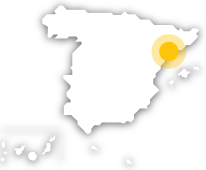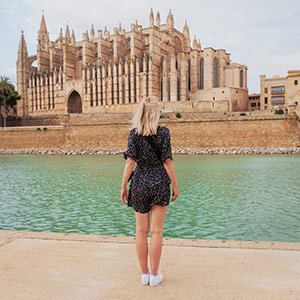
Iberian settlement of Castellet de Banyoles

Tivissa
This settlement of Iberian origin, one of the most important in the Mediterranean part of Catalonia, produced a collection of coins, precious metal work and ceramics known as the treasure of Tivissa.
Discovered in 1912, this fortified settlement has an area of about 4,400 ha and was inhabited between the 5th and 2nd centuries B.C. Specifically, it is thought to belong to the first Iberian period; it appears to have been destroyed as the result of a confrontation between Romans and Carthaginians during the Second Punic War. Excavations so far have uncovered the walls of the dwellings and two outlying defensive towers which were part of the walls, from which came what is known as 'the treasure of Tivissa'. This comprises various collections of silver religious articles –highlights include a ceremonial plate with engravings belonging to a possible Iberian temple–, Iberian and Greek pottery, as well as native Ibero-Roman coins with the inscription 'Tibisi', as well as other coins struck in 'Emporion' (Ampurias, Girona) and 'Ilerda' (Lleida).
Debe activar Javascript para poder utilizar este servicio
Iberian settlement of Castellet de Banyoles
Carretera C-44 de Tivissa a Móra la Nova, km 23
43746 Tivissa, Tarragona (Catalonia)
Activa JS

